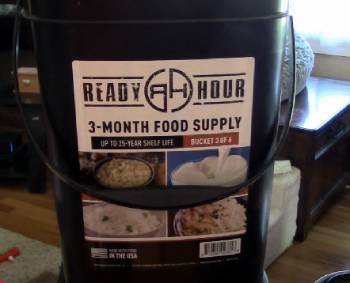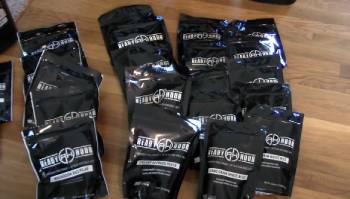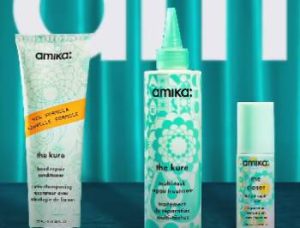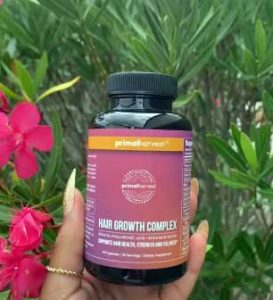Emergencies are unpredictable, but your food supply doesn’t have to be. If you’ve ever worried about food shortages, natural disasters, or just want a reliable backup plan, Ready Hour emergency food is worth considering. After trying multiple brands, I can confidently say that Ready Hour offers some of the best value and quality in long-term food storage. With a shelf life of up to 25 years, durable packaging, and actual meal-worthy options (not just rice and granola), this is a survival food supply that makes sense. Whether you’re prepping for an emergency or need an easy meal solution for camping, this is a smart investment.
But how does it compare to other brands? Is the taste worth it? And what should you know before buying? Let’s break it all down.
What Makes Ready Hour Stand Out?

Ready Hour stands out as a reliable emergency preparedness brand, offering a wide range of survival foods, water filtration systems, and essential gear designed for long-term storage. One of its biggest strengths is its emphasis on high-quality, shelf-stable food products that last up to 25 years.
This makes it a go-to choice for preppers, campers, and anyone looking to build a solid emergency food supply. Unlike many competitors, Ready Hour offers larger serving sizes with a focus on balanced nutrition, ensuring that meals provide sufficient calories and nutrients to sustain energy during emergencies.
Another factor that sets Ready Hour apart is its affordability. While many emergency food brands charge a premium for long-term storage options, Ready Hour provides cost-effective solutions without compromising quality. The brand also offers a diverse menu, including hearty soups, breakfasts, entrees, and even desserts, catering to different tastes and dietary needs. Additionally, Ready Hour prioritizes ease of preparation, with most meals requiring only water and a few minutes of cooking time—ideal for stressful situations where resources may be limited.
Beyond food, Ready Hour provides a full lineup of survival essentials, including water purification tablets, first-aid kits, and self-sufficiency tools. This makes it a one-stop shop for emergency preparedness. With its combination of longevity, variety, affordability, and practicality, Ready Hour has built a strong reputation among survivalists and everyday consumers alike, ensuring peace of mind in uncertain times. Whether for disaster preparedness or outdoor adventures, this brand delivers reliability when it matters most.
My Experience With Ready Hour Food
When I first decided to stock up on emergency food, Ready Hour stood out as an affordable and well-reviewed option. I started with their 72-hour kit to test the quality before committing to a larger supply. The first thing I noticed was the generous portion sizes—each meal provided enough calories to keep me full, which isn’t always the case with emergency food brands. The packaging was sturdy, with vacuum-sealed pouches designed for long-term storage, giving me confidence that the food would stay fresh for years.
I tried several meals, including their creamy rice and vegetable stew, mac and cheese, and hearty potato soup. While I wasn’t expecting gourmet flavors, I was pleasantly surprised by how satisfying they were.
The meals were easy to prepare—just add boiling water and wait a few minutes. The texture and taste were better than I anticipated, and a little seasoning helped enhance the flavor. Compared to other emergency food brands, Ready Hour’s meals didn’t have an overpowering artificial taste, which was a big plus.
What really impressed me was the variety. Instead of relying solely on bland survival rations, Ready Hour offers breakfasts, entrees, and even desserts, making long-term emergency planning much more manageable.
I also appreciated the brand’s focus on calorie-dense meals, which would be crucial in a survival situation. Overall, my experience with Ready Hour food was positive. It’s a solid investment for anyone looking to prepare for emergencies without sacrificing quality or affordability.
How to Get the Most Out of Ready Hour Food?

To get the most out of Ready Hour food, proper storage and preparation are key. Since these emergency meals are designed for long-term use, keeping them in a cool, dry place away from direct sunlight and moisture will help maintain their freshness and longevity. Storing them in airtight containers or sealed buckets can provide extra protection from pests and humidity, ensuring they last as long as intended.
When it comes to preparation, following the instructions carefully will yield the best results. Most meals require just boiling water, but adjusting the amount slightly can help improve texture and consistency. If a dish seems too thick, adding a little extra water can make it more palatable, while letting it sit a bit longer can enhance flavor and absorption. Adding personal seasonings like garlic powder, black pepper, or dried herbs can also elevate the taste, making meals more enjoyable rather than just functional.
Using Ready Hour food strategically in different situations will also help maximize its benefits. While it’s primarily designed for emergency preparedness, these meals can be great for camping, road trips, or even busy days when cooking isn’t an option.
Rotating food supplies by occasionally incorporating Ready Hour meals into regular meal planning ensures you’re familiar with their taste and preparation while keeping stock fresh. Pairing them with fresh ingredients like canned vegetables, protein sources, or even hot sauce can add variety, making survival meals feel less repetitive and more satisfying.
Pros and Cons of Ready Hour

Pros:
- Long shelf life: Ready Hour food is designed for long-term storage, with many products lasting up to 25 years when stored properly.
- Affordable pricing: Compared to other emergency food brands, Ready Hour provides a good balance between cost and quality, making it accessible for most budgets.
- Generous portion sizes: The meals are calorie-dense and filling, ensuring adequate energy during emergencies or survival situations.
- Variety of meal options: Offers breakfast, entrees, sides, and even desserts, providing more options than standard survival rations.
- Easy preparation: Most meals require only boiling water, making them convenient for camping, emergencies, or quick meals.
- Strong packaging: Vacuum-sealed and Mylar pouches help preserve freshness and prevent spoilage over time.
- Bulk purchasing options: Available in kits for short-term or long-term survival, allowing flexibility based on individual needs.
Cons:
- Flavor can be bland: While the meals are filling, they often need extra seasoning to improve taste.
- High sodium content: Many emergency foods, including Ready Hour, contain a lot of sodium to preserve shelf life, which may not be ideal for those with dietary restrictions.
- Not all meals are allergen-friendly: Some options contain gluten, dairy, or soy, limiting choices for those with food allergies or dietary restrictions.
- Texture varies: Some meals, like soups and stews, have a better texture than others, which may not appeal to everyone.
- Bulky storage: While packaging is durable, storing large quantities requires a decent amount of space.
Also Read: My Experience With Violife Cream Cheese
Ready Hour Vs. Other Emergency Food Brands
- Ready Hour Vs. My Patriot Supply
Both Ready Hour and My Patriot Supply are well-known for emergency preparedness, offering long shelf life and easy-to-make meals. While both provide similar meal options, Ready Hour stands out with its larger portion sizes and calorie-dense meals, ensuring better energy during emergencies. My Patriot Supply, on the other hand, focuses on taste variety and organic ingredient options. If you prioritize affordability and bulk storage, Ready Hour is a solid choice, but if you want a bit more gourmet-style flavor, My Patriot Supply might be worth considering.
- Ready Hour Vs. Augason Farms
Augason Farms is another leading emergency food brand, offering a mix of freeze-dried and dehydrated foods. While Ready Hour emphasizes hearty, calorie-rich meals designed for survival, Augason Farms includes a wider variety of meal ingredients, such as individual freeze-dried fruits, dairy, and baking essentials. Ready Hour is more focused on complete meal kits, making it easier for those who want pre-planned, ready-to-cook options, whereas Augason Farms is great for those who like to mix and match their own meals.
- Ready Hour Vs. Mountain House
Mountain House specializes in freeze-dried meals that cater to campers, hikers, and preppers alike. Their meals have a reputation for great taste and texture, but they tend to be more expensive. Ready Hour, on the other hand, is more budget-friendly and geared toward long-term food storage. If you need lightweight, just-add-water meals for outdoor adventures, Mountain House is ideal, but for stockpiling large amounts of food, Ready Hour offers better value.
- Ready Hour Vs. Legacy Food Storage
Legacy Food Storage is known for its non-GMO, high-quality ingredients, making it an appealing choice for those who prioritize clean eating even in emergencies. It offers larger serving sizes per pouch, but at a higher cost. Ready Hour, while still providing nutritious options, is more affordable and accessible for those looking to build an emergency supply without breaking the bank. If quality ingredients matter more, Legacy is a great option, but for cost-effective preparedness, Ready Hour takes the lead.
- Ready Hour Vs. Wise Company
Wise Company provides long-term food storage solutions similar to Ready Hour, with meals designed for quick preparation. However, some users find Wise Company’s meals to be lower in protein and calories compared to Ready Hour’s offerings. Ready Hour is better suited for those who need a more substantial meal to sustain energy during an emergency, while Wise Company focuses on convenience and variety. If you need a balance between taste and calories, Ready Hour is the better pick.
Also Read: My Experience With VitaHustle One Superfood
Frequently Asked Questions (FAQs)
Yes, Ready Hour is a well-regarded brand for emergency food supplies. The quality is solid, the pricing is reasonable, and the packaging is better than many competitors.
Ready Hour food is made in the USA, specifically in Salt Lake City, Utah.
Yes! Ready Hour is the food brand under My Patriot Supply. It’s the same company, just focused on emergency food storage.
If unopened and stored properly, Ready Hour food lasts up to 25 years. Once you open a pouch, it should be used within a year for the best taste and quality.
Final Thoughts
If you’re looking for a reliable, affordable, and well-packaged emergency food supply, Ready Hour is absolutely worth it. Compared to other brands, it offers better meal variety, sturdier packaging, and a long shelf life at a budget-friendly price.
Would I buy it again? Absolutely. Whether for emergency prepping, camping, or peace of mind, having a stash of Ready Hour food is a smart move.
If you’ve been on the fence about stocking up, this is one brand I can confidently recommend.



